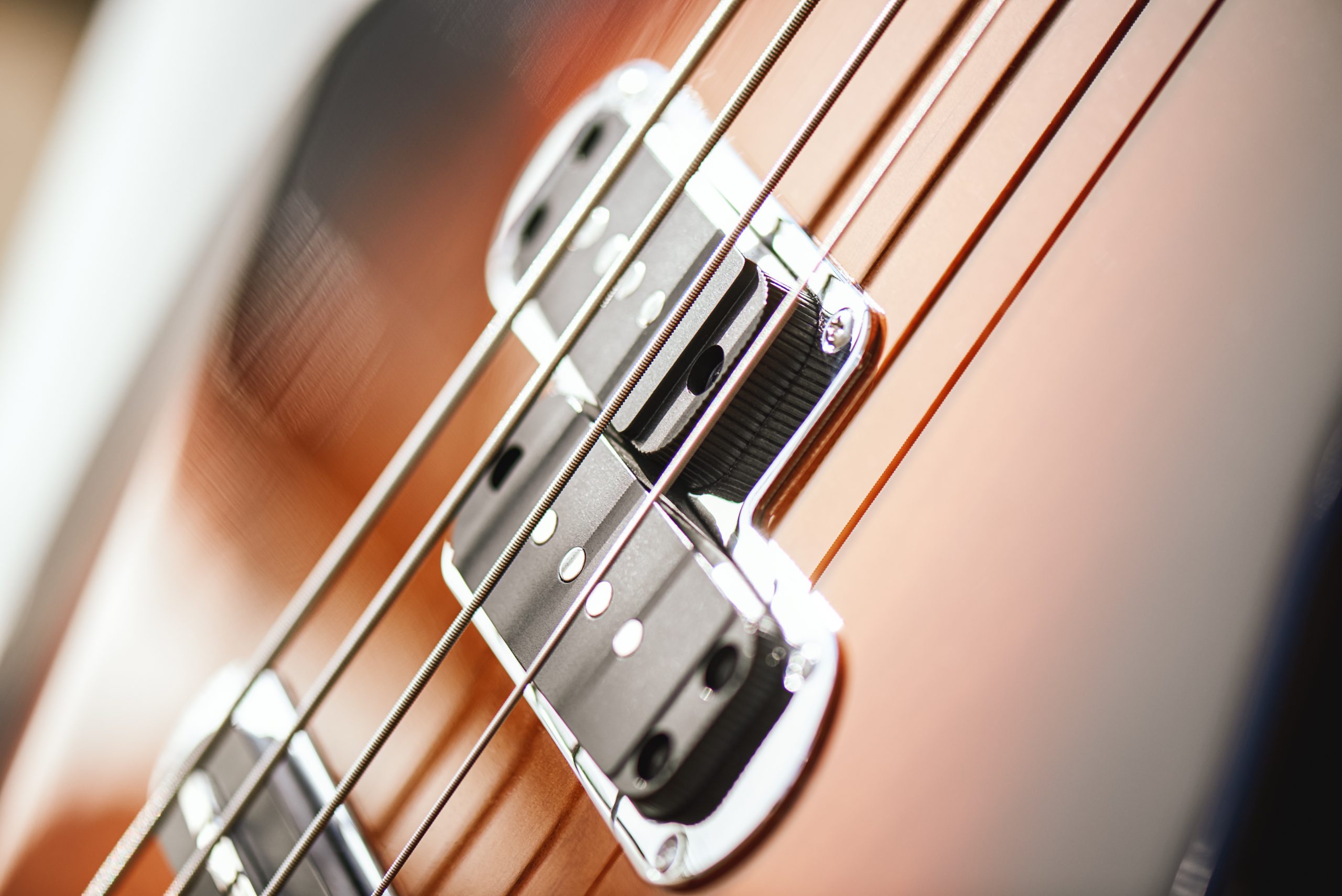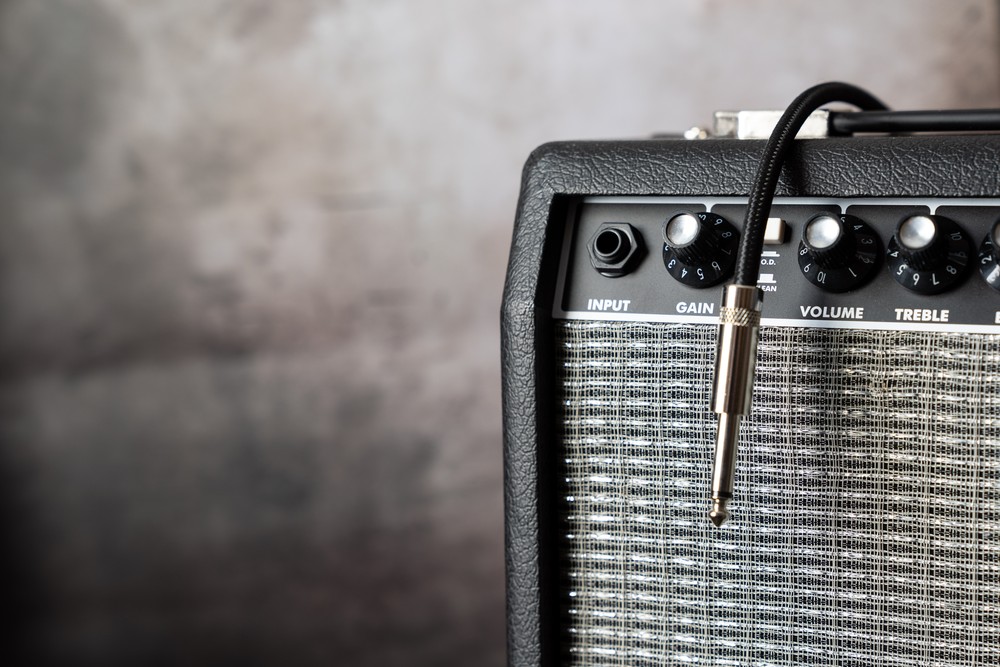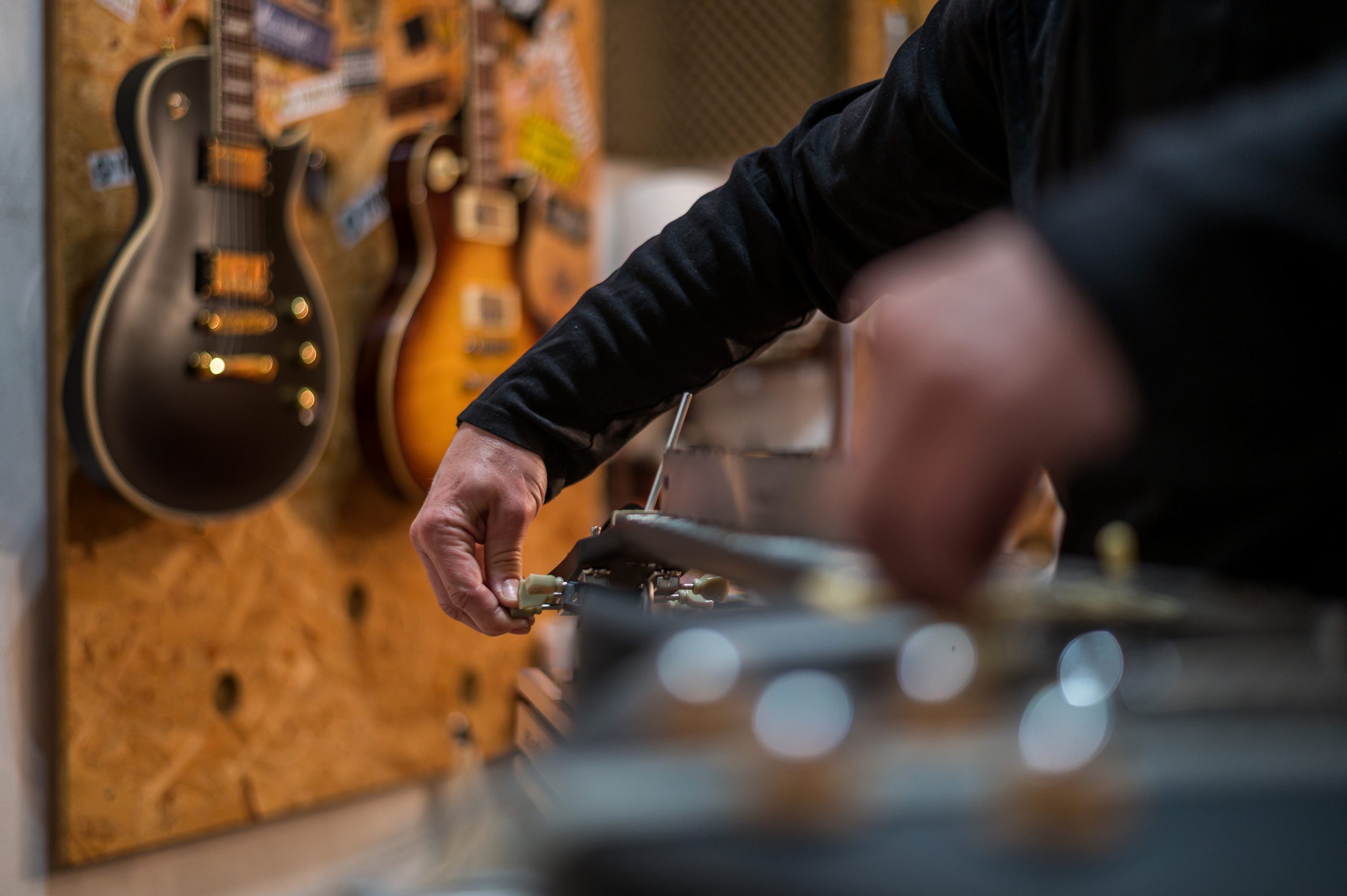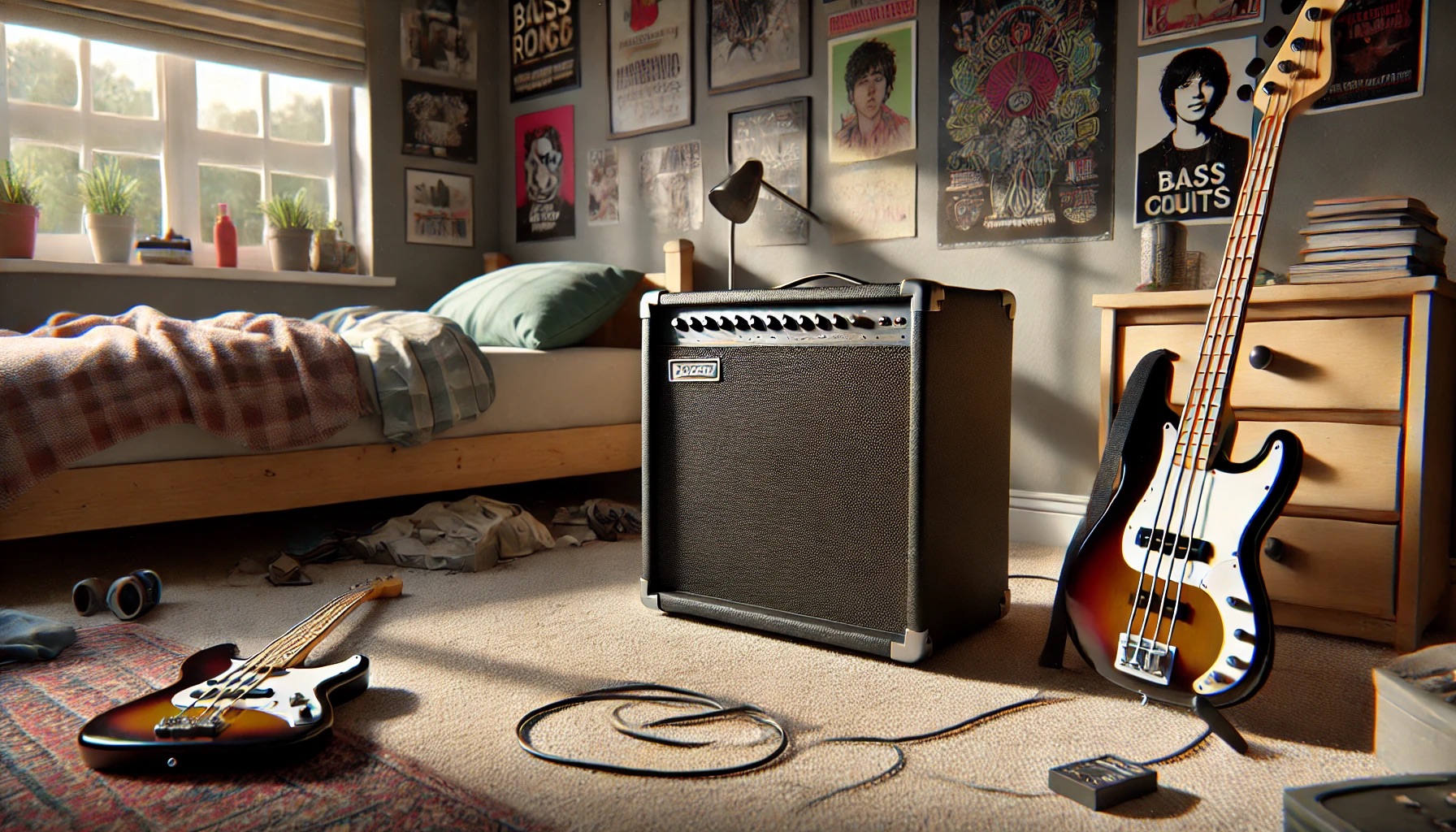If you’re a budding musician, you’re no doubt familiar with bass guitars. Generally speaking, bass instruments are the lowest-pitched instruments in a band or orchestra. Prior to the mid-twentieth century, these low notes were played on a standing bass. But in 1948, Leo Fender gave the world a brand new take on that old classic when he introduced the bass guitar.
Today, the bass guitar is a popular instrument among musicians, and they are used in a variety of genres, including rock, metal, jazz, blues, and country. You may occasionally see them used in symphonic and orchestral music.
Top-Rated Bass Guitars
Read More
Snapshot
Read Less
What Exactly Is A Bass Guitar?
A bass guitar has a guitar body, a neck, a headstock, strings, tuning pegs, and pickups. Most bodies are made of wood, while the attached neck design could be made of wood, plastic, or other material that gives it extra durability.
The headstock is at the top of the neck and holds the pegs used to tune the bass guitar strings to different pitches. These pegs are turned to loosen or tighten the strings, depending on the pitch the player is trying to create.
Most bass guitars have frets along the neck of the instrument that are used to create different notes by pinching the strings between the fingers and the fretboard. There are pickups under the strings that convert the vibrations of the strings into electrical signals.
What Exactly Is A Bass Guitar Pickup?
Pickups are located along the neck of the bass guitar, under the strings. They pickup the vibration of the string (hence the name) and convert these vibrations into electrical signals, which are then sent to an amplifier so you can hear them.
The Number Of Strings On A Bass And What It Means
The most popular bass guitars are the four-string basses because they’re the easiest to play and offer the typical configuration. Five-string basses and six-string basses are also available, but they are more difficult to play.
Tuning A Bass Guitar
The standard tuning for a bass guitar is E-A-D-G, but many bassists prefer to use other tunings, such as drop D or drop C, because it gives them a wider range of notes to work with. Five-string basses will either have a tuning of B-E-A-D-G or E-A-D-G-C. Once you learn how to tune a bass guitar if you haven’t already, you can get that desired sound out of these stringed instruments.
Properly Holding A Bass Guitar
The proper way to hold a bass guitar is by sitting down and resting the instrument on your thigh or by standing and using a strap to support the weight of the bass. You don’t have to have a string, even if you’re standing up, but it takes practice to hold it steady while you play, so this positioning is best for experienced players.
How Are Bass Guitars Different From Standard Guitars?
The main difference between a bass guitar and a standard guitar is the size of the instrument. Bass guitars are larger and have a longer neck than regular guitars. They also have a lower tuning than an electric guitar.
Choosing A Bass Guitar
How you plan to play your bass guitar matters more than you might realize. If you have a particular style in mind, such as strumming or plucking, look for an instrument to accommodate that. You can also find bass guitars with specific features, such as frets on the neck and pickups.
The size and weight of your bass guitar can significantly impact how comfortable it is to play. If you’re a smaller person, you might find a lighter, smaller bass guitar easier to handle. On the other hand, if you’re taller or have larger hands, you may prefer a larger instrument.
- Check Your Budget
Electric bass guitars are typically more expensive than beginner instruments, such as ukuleles or acoustic guitars. In addition, nicer, newer bass guitars can be costly, which isn’t ideal for beginners or those on a budget. A cheaper or used guitar can be a better beginner bass guitar before you invest a lot of money into a nice model.
The brand you choose will affect several things, most notably the price and the quality. If you’re on a budget, you’ll probably want to choose a less expensive brand. However, remember that cheaper guitars may not last as long or sound as good as more expensive ones.
- Pick A Type Of Bass Guitar
There are several types of bass guitars: the electric bass, the acoustic bass, the fretless bass, and the 5-string or 6-string bass. However, there’s some overlap in these types as well. For instance, you can find fretless bass guitars with varying numbers of strings as you can with either electric or acoustic basses. Therefore, it’s essential to determine what you want by comparing fretless and fretted bass guitars, comparing 4-string and 5-string bass guitars, and comparing hollow and solid body guitars because they all provide a different playing experience and produce a unique sound, like how the guitar in our Gretsch Jim Dandy review sounds so unique. It’s also important to understand how a bass guitar is different from an upright bass. - Determine The Size Your Bass Should Be
Unlike other instruments, you don’t have to worry about finding a bass guitar that’s perfect for you. They’re available in a variety of sizes to accommodate different body types. It’s also easy to find a lightweight bass guitar that’s easy to carry or a larger, sturdier instrument. Determine what size is perfect by comparing short and full-scale bass guitars.
The weight of your bass guitar also matters. Heavier guitars are typically made from solid wood, which gives them a richer sound. However, they can also be more challenging to carry around. So if you’re planning to travel with your bass guitar or take it to gigs, you may want to consider a lighter, smaller instrument.
- Consider Your Bass Pickups
There is no single “best” pickup choice. Different pickups produce different tones, so it’s important to experiment with various options and choose the one that sounds best. Popular choices include humbucker pickups, single coils, active pickups, P-90s, a piezo pickup, etc.
Simple pickups, such as single-coil pickups, often produce the most classic tones, while more complex pickups, such as humbuckers, can produce a wider range of tones. If you’re not sure what to choose, it’s a good idea to compare single-coil and humbucker bass pickups at your local music store and see which ones you like the sound of best.
You may also want to learn more by comparing passive and active bass guitars to find what’s right for you.
- Do You Want Additional Accessories For Your Bass?
In addition to the actual bass guitar, you may want to consider investing in some additional accessories. These include an amplifier, a strap, a gig bag or case, and a tuner.
Deciding on an amp for your bass allows you to hear your bass guitar when you’re playing with other instruments or with a backing track. You may also want to use bass cables instead of guitar cables and compare bass picks, and guitar picks to find your preferred playing style.
Bass Guitar Types, Accessories, and Kits
There are many different types of bass guitars, each built for a specific purpose. The abilities of these bass guitars to produce different sounds make them ideal for different playing styles and genres of music. Choosing your accessories with intention will allow you to make the most out of your bass guitar and play the best music.
Bass Guitars By Use
Beginner Bass Guitars
5 String Bass Guitars
Jazz Bass Guitars
Slap Bass Guitars
Fretless Bass Guitars
Bass Guitars Owned By Famous Bassists
Paul McCartney’s Bass
Lemmy’s Bass
Flea’s Bass
Do It Yourself Bass Guitar Parts
Bass Guitar Kits
Bass Guitar Pickups
Precision Bass Pickups
Jazz Bass Pickups
Bass Strings
Strings For Slap Bass Guitars
Bass Accessories
Bass Amps
Bass Combo Amps
Bass Practice Amps
Bass Guitar Stands
Bass Effects Pedals
Top Bass Guitar Brands
If you’re looking for a high-quality bass guitar that will last for many years, choose a well-known brand like Fender, Gibson, Warwick, or Rickenbacker. These companies have a reputation for making high-quality instruments that sound great and last for a long time.
Keep in mind that a higher price doesn’t always mean better quality, and some well-known brands offer excellent quality beginner instruments that are very affordable.
Rickenbacker Bass Guitars
Fender Bass Guitars
Warwick Bass Guitars
Owning A Bass Guitar
Owning your own bass guitar requires a lot of maintenance and care. It’s important to know how to set it up and use it and repair it if something breaks. Regular maintenance like replacing old strings and cleaning it will help keep it sounding its best for a long time.
Setting Up Your Bass
When you first get your bass guitar, it’s important to set it up correctly, so it plays its best. This process includes adjusting the truss rod, setting the intonation, and adjusting the action. Acoustic guitars also have truss rods, and certain models like the one in our Yamaha FG830 review have adjustable ones.
Making Your Own Bass Guitar
If you’re feeling creative, you can also try making your own bass guitar. This can be a fun project, allowing you to create a unique instrument. There are bass guitar kits available that have everything you need to get started, or you can gather the parts yourself.
This is a great experiment in wiring your own electric bass and creating your own bass guitar neck. It also requires you to paint your own bass, which gives you more control over the customization of the instrument.
Repairing Your Bass
Even if you take good care of your bass guitar, it may come when it needs to be repaired. Knowing how to do simple repairs like repairing the input jack on your bass can save you a lot of money, and it’s also a good skill to have in case something more serious happens.
Cleaning A Bass Guitar
Cleaning your bass guitar is important to do on a regular basis. This will help prolong the life of the instrument and keep it sounding its best.
Replacing Parts On Your Bass
Over time, normal wear and tear on your bass will require replacing and restringing your bass strings and other routine maintenance and repairs. You should know how to perform basic repairs on your own.
Recording Music With Your Bass Guitar
Recording your bass playing is a great way to improve your skills and create music that you can share with others. You can record yourself playing along with backing tracks or record with other musicians.
Improve Your Bass Skills
Learn To Play Bass Guitar: As you learn to play, you can read tips for strumming on bass guitars to achieve your desired sound. Many techniques, like slapping on the bass, create nuanced notes and playing structures that make your instrument even more enjoyable.
Bassist Interviews
Recommended Bass Lessons: Many students of the bass guitar may take lessons to improve their knowledge because instruction from a professional is valuable. Having a foundation and support from an experienced player can give you the confidence you need to continue your quest for learning on your own.
Using Guitar Pedals On A Bass: Pedals create different sounds like echos, reverb, and overdrive. These are all effects that can be used to make your bass playing sound more full and exciting. Experiment with different settings on each pedal to find the optimal sound for you. However, remember that guitar pedals are not meant to be used on a bass, and you may want to look for pedals specifically designed for your instrument.
Using A Guitar Amp On A Bass: Amps made for bass guitars amplify notes in the lower register more effectively. If you plug your bass into a guitar amp, you may not get the sound you’re going for. It is possible to use a guitar amp if that’s all you have available, but be aware that it may not produce the ideal sound.
Frequently Asked Questions About Bass Guitars
Where can I sell my used bass guitar?
There are a few different options for selling your used bass guitar. You can sell it online through websites like Reverb or eBay or take it to a local music store. You can also try posting it on websites like Craigslist or Facebook Marketplace.
Do guitar control knobs work on bass guitars?
Yes, guitar control knobs will work on bass guitars. However, you may need to adjust the settings on your amp to get the sound you want.
How do I measure the string spacing on bass guitars?
There are a few different ways to measure the string spacing on bass guitars. You can use a ruler or a tape measure, or a tool like the String Spacing Rule from StewMac.
How do I connect my bass guitar to a computer?
There are a few different ways to connect your bass guitar to a computer. For example, you can use a USB interface, an analog interface, or a MIDI interface. Then, simply use the appropriate cables to connect your bass to the interface and connect the interface to your computer.
What can you do with scales for the bass guitar?
There are many things you can do with scales for the bass guitar. For example, you can use them to improvise solos, write your own bass lines, or learn new melodies. Scales can also be a helpful tool for memorizing songs.
What can I do about my sore fingers after playing bass?
If your fingers are sore after playing bass, you can try a few different things. You can soak them in warm water, use hand lotion, or take a break from playing. It’s normal to develop callouses on your fingers after playing for a while, so don’t worry if that happens. However, if the soreness persists, you may need to see a doctor.
How do you write bass guitar pieces for accompaniment?
There’s no way to write bass guitar pieces for accompaniment. You can start by coming up with a melody, and adding bass notes that complement the melody. Alternatively, you can start with a chord progression and add bass lines that fit the chords. Experiment and see what sounds best to you.





















